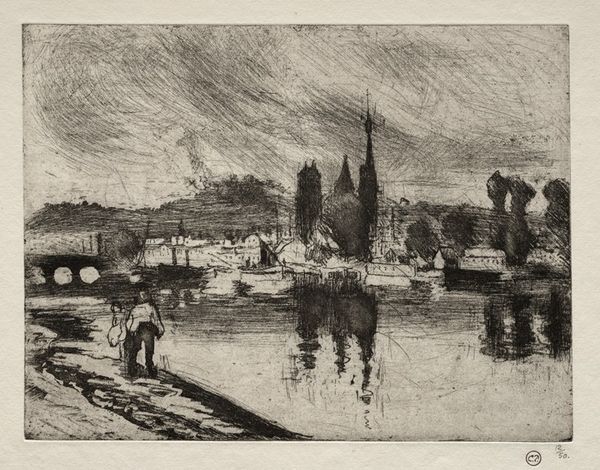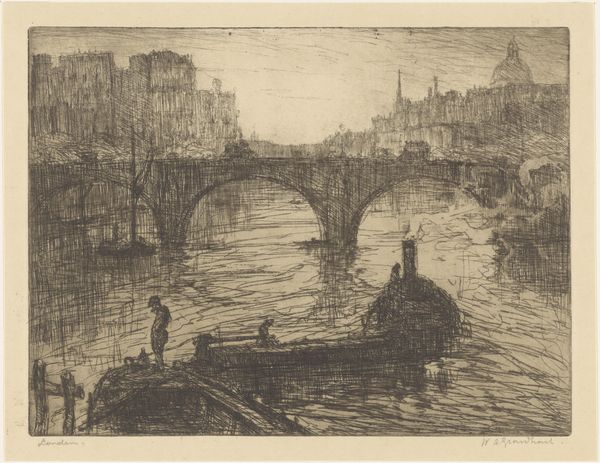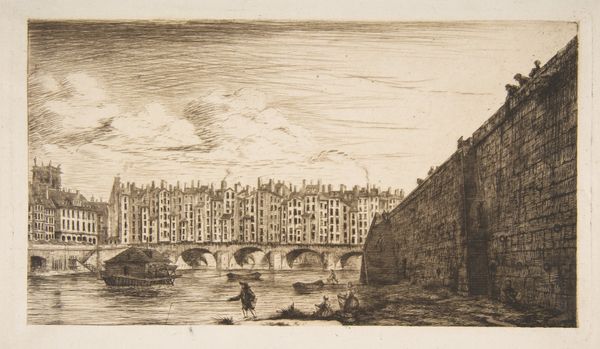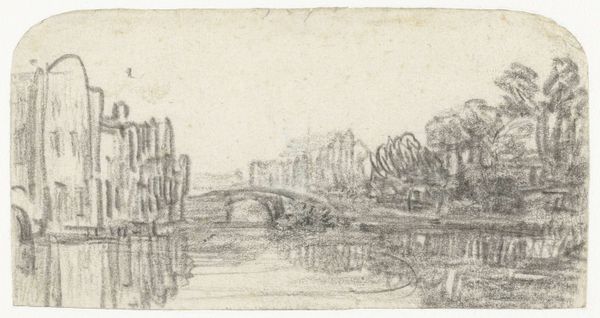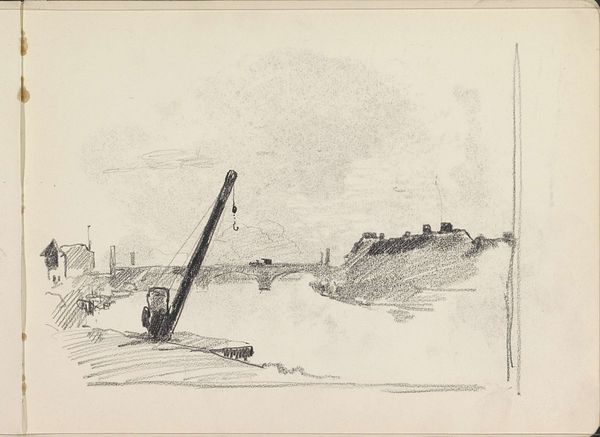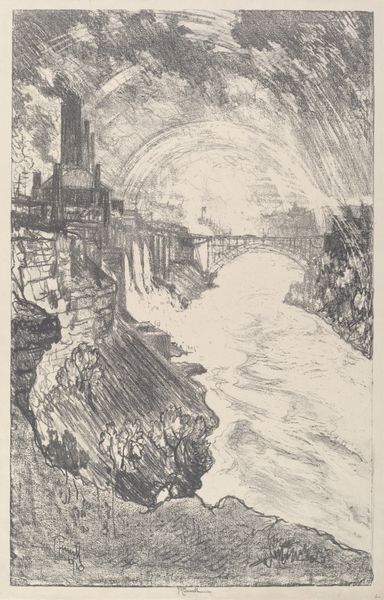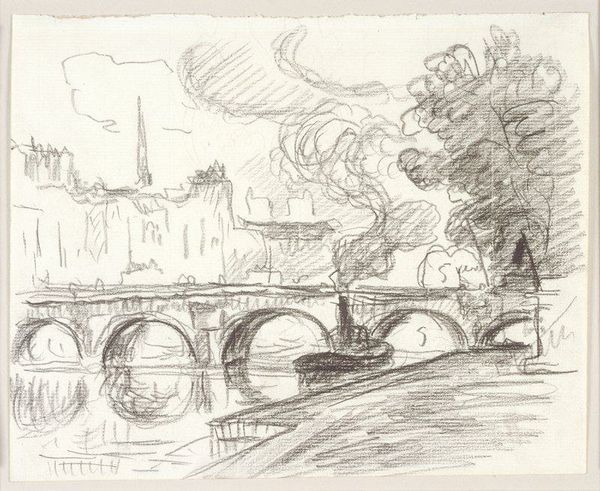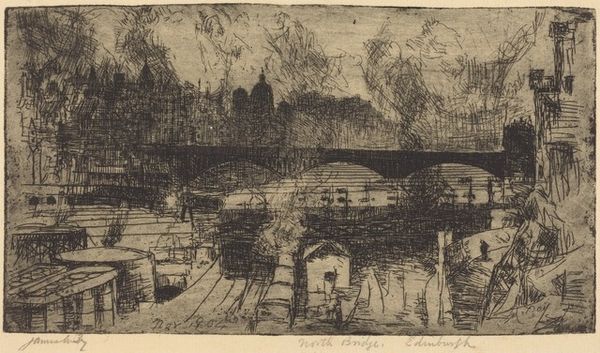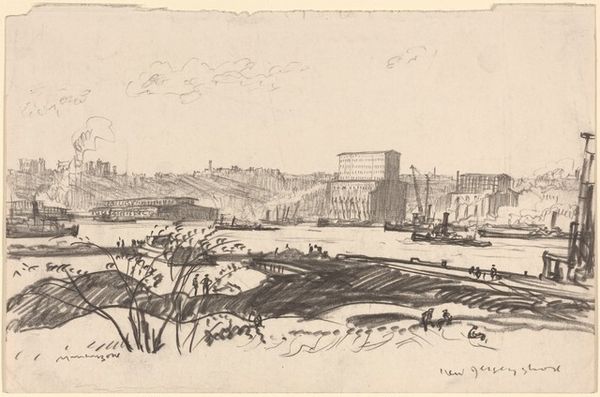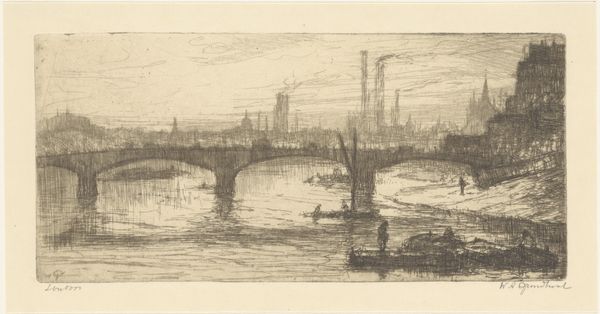
lithograph, print
#
landscape illustration sketch
#
amateur sketch
#
light pencil work
#
ink drawing
#
lithograph
# print
#
pen sketch
#
pencil sketch
#
incomplete sketchy
#
etching
#
ink drawing experimentation
#
pen-ink sketch
#
united-states
Dimensions: 13 1/2 x 17 13/16 in. (34.29 x 45.24 cm) (image)18 x 22 in. (45.72 x 55.88 cm) (mat, Size II)
Copyright: No Copyright - United States
Curator: Here we have Philip Little’s "Minneapolis Flour Mills," a lithograph from around the 19th century. What strikes you first about it? Editor: Its tempestuous mood, decidedly somber. The flurry of lines creates a feeling of instability, almost like the scene is dissolving before our eyes. Curator: Little’s rendering does capture the frenetic energy of industrial expansion, the environmental impact of which was often ignored. The mills dominated the landscape and economy, drawing rural populations into urban settings for work, often under harsh conditions. We must remember that these industries also fueled a specific economic system and benefitted only a few people. Editor: Indeed. But consider the technical aspects. The use of hatching and cross-hatching is particularly striking, lending texture and depth to the monochromatic print. The composition itself, the placement of the bridge and buildings, creates a stark contrast between the industrial structures and the seemingly turbulent natural world surrounding them. Curator: Yes, and beyond formal analysis, we should acknowledge the historical and cultural factors that underpin this imagery. The milling industry, deeply entwined with the exploitation of both land and labor, highlights issues of inequality and the marginalization of working-class communities who bore the brunt of its cost. This landscape is never just a landscape. Editor: True, though the ambiguity of the sketch also hints at the transformative power of industry. It could also reflect its possibilities, the movement and progress it symbolizes. The visual weight isn't entirely negative, the artist manages a dynamic balance, wouldn't you say? Curator: I believe such formal interpretations can risk obscuring the socio-economic realities. For many, industrial progress came at an undeniable human cost that shouldn’t be idealized or romanticized by aesthetic appreciation. Editor: Perhaps. Still, by examining Little's lithograph closely, both through a formal lens and through an awareness of its historical context, we can truly grapple with the layered complexities it presents. Curator: Exactly, and remember that its story is deeply entangled with gender, class, and racial justice movements—themes still relevant in our discussions of contemporary landscapes today.
Comments
No comments
Be the first to comment and join the conversation on the ultimate creative platform.
